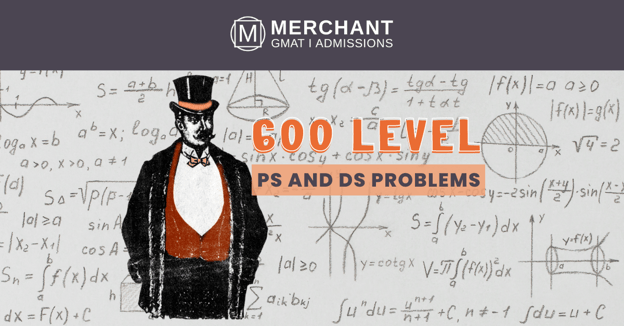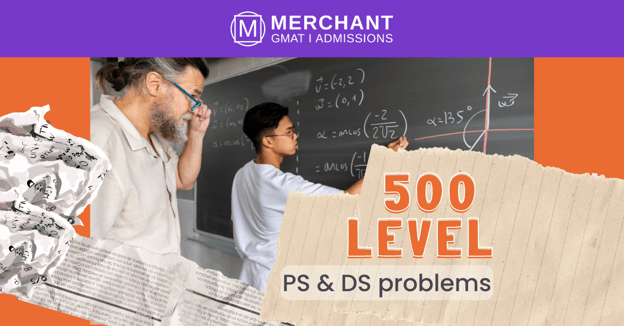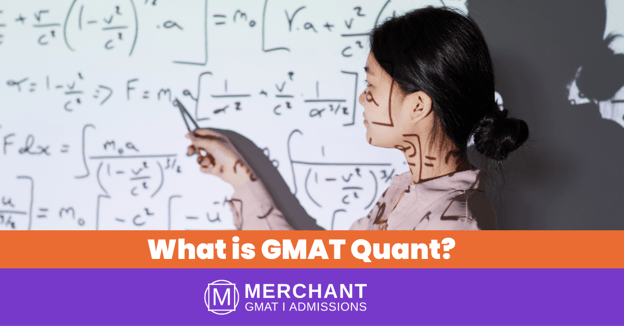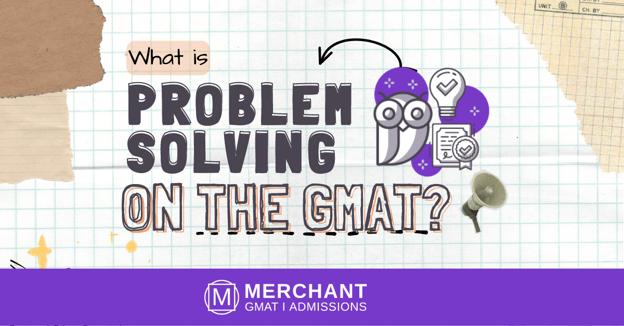Cracking the Toughest GMAT Problem Solving and Data Sufficiency Problem: A 700-Level Challenge

If you're preparing for the GMAT, you know that practice is key to success on the test. But what happens when you come across a problem that stumps you, no matter how many times you try to solve it? For many students, this can be a frustrating and even discouraging experience. But don't give up! In this post, we'll take a look at a challenging GMAT problem and show you how to crack it. By the end, you'll be ready to tackle any tough question that comes your way.
What distinguishes 700-level problems from lower level ones and why are these considered the toughest?
For GMAT test takers, 700-level problems can be the most intimidating and challenging ones to tackle. What makes these problems so difficult? 700-level GMAT questions are meant to assess a student's understanding of complex problem-solving and critical thinking skills, including logic and analytical reasoning. Unlike lower level GMAT problems, 700-level questions often require multiple steps, creative problem solving, and in-depth analysis to answer correctly. Mastery of more sophisticated GMAT concepts like algebraic equations, principles of exponential growth/decay, and various advanced arithmetic calculations are also assumed for accurate answers. The rigor demanded by GMAT 700-level problems can necessitate several hours of studying and practice in order to become comfortable with this type of material.
An example of a 700-level Problem Solving problem and how to solve it
GMAT Problem Solving (PS) questions in the 700 or higher range tend to be considered very challenging. Let's take a look at the following example: The value of a piece of equipment decreases by 20% in the first year and decreases by an additional 10% in the second year. If the equipment originally cost $10,000, what is the value of the equipment at the end of the second year? A) $6,200, B) $7,200, C) $7,800, D) $8,000, E) $8,400. To solve this problem, you need to calculate the value of the equipment at the end of the first year and then apply the additional 10% decrease to get the final value. After the first year, the value of the equipment decreases to 80% of its original value, which is $10,000 x 0.8 = $8,000.
Then, the value of the equipment decreases by an additional 10%, which means the final value is 90% of $8,000, or $8,000 x 0.9 = $7,200.
Therefore, the answer is (B) $7,200.
Tips and tricks for solving 700-level Problem Solving problems
When it comes to GMAT PS problems, there are certain strategies that can help you achieve success. It's important to practice and develop your skill set so that you become familiar with the complexity of 700-level problems. One way to get started is by understanding the question format. Knowing which types of questions are most likely asked for individual problem types can give you a leg up when it comes time to tackle each problem. Furthermore, breaking down multi-layered problems into smaller components will allow you to analyze solutions more efficiently and critically assess incoming data. Additionally, don't forget that GMAT timed exams provide tools (e.g., calculators) that can be used in a particular problem type. For example, resorting to equations or basic math functions when reasoning fails could save considerable time and energy during GMAT examinations. With these tips and tricks in mind, GMAT applicants should be equipped to maximize their scores on tricky PS questions!
An example of a 700-level Data Sufficiency problem and how to solve it
A 700-level Data Sufficiency (DS) problem is a unique type of question found on the GMAT exam. It requires proficiency in logical reasoning and analysis to answer correctly within set parameters. It also demands practice and understanding of underlying components that make up the problem. An example of this type of problem is: What is the value of a if a^2 + 5a + 6 = 0? Statement 1: a > -3; Statement 2: a < -2. This 700-level GMAT DS problem involves solving for the value of a in the equation a^2 + 5a + 6 = 0, given two statements. The solution involves using the quadratic formula to determine that a can be either -3 or -2. Statement 1 tells us that a > -3, but since a can also be -2, statement 1 alone is not sufficient to determine the value of a. Statement 2 tells us that a < -2, which means that a can only be -3, making statement 2 sufficient to determine the value of a. In this example, statement 2 provided the necessary information to determine the value of a, while statement 1 did not. By understanding the underlying concepts and practicing with similar problems, test-takers can develop the skills needed to tackle difficult DS questions.
Tips and tricks for solving 700-level Data Sufficiency problems
Solving GMAT 700-level DS problems can be challenging, but there are a few tips to bear in mind that may make the process easier. A key strategy is to separate the data given for each statement, as if it were two distinct equations. This allows you to quickly break down the conditions and see other underlying relationships between them. Remember, even if one statement alone doesn't provide enough information to answer the question, together they might offer valuable insights. Additionally, it helps to stay organized and keep track of each part of the information given in a problem. If nothing else, remember that there are four possible answer choices and that an effective GMAT prep course will give you strategies to properly deal with GMAT 700-level questions.
It's clear that 700 level PS and DS problems require greater skill and focus than lower-level questions. The problem-solving approach to answer those questions requires certain foundational knowledge and aptitude, which comes with practice. However, information alone isn't enough. Gaining effective strategies and learning the right solutions are key factors in mastering GMAT problems. Investing in excellent academic resources and practicing diligently can go a long way towards improving your chances of success on the GMAT exam. Finally, consider receiving the guidance of an expert coach to better understand 700-level PS and DS problems - after all, practice makes perfect! Making the investment in training from Merchant GMAT & Admissions will give you an added edge when it comes to facing such difficult questions during the exam. So take this advice into account as you embark on your GMAT journey and aim for a top score!





